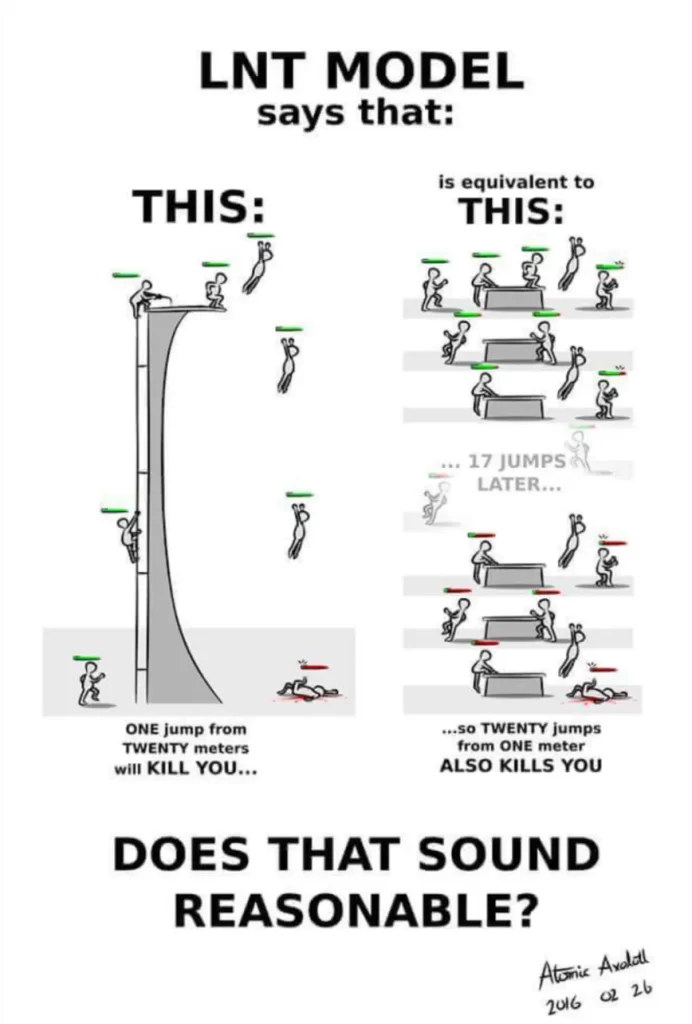Author: Kiersten Sundell
Have you ever heard of the linear no-threshold model for measuring radiation exposure?
In essence, this model posits that every tiny exposure to radiation accumulates, impacting you in the same way that one large exposure would. This is a controversial viewpoint in the scientific world, so let’s quickly dive in.
Let’s say that you are a nuclear plant worker who was exposed to the maximum allowable dose for a worker — 50 millisieverts per year. This amount is still 20 times lower than 1000 mSv, which is connected to a 5% increase in cancer likelihood. While plant staff typically never get close to this level of exposure, for the sake of an example, let’s say you got the maximum allowable dose every year, for 40 years. This would add up to 2000 millisieverts. Scientific precedent says that you would be perfectly fine, since the doses are spread out over multiple decades.
Now let’s say you were exposed to 2000 millisieverts all at once. A dose this high would likely give you immediate radiation sickness, damage your white blood cells, and increase your risk of developing cancer. An example of someone who may have received a dose this high is a firefighter who responded to the Chernobyl accident on the day of the meltdown.
Let’s take that a little further — here’s a graphic created by Daniel Chen to illustrate the same idea.

If you were to jump off a 20-meter ledge onto pavement one time, you would likely die. But let’s say you jump off of a 1-meter cliff twenty times in a row. According to the linear no-threshold model for radiation, that should kill you too, right? Since exposures add up perfectly over time?
Of course it wouldn’t, and you would be completely fine and healthy. The way that radiation affects us depends on dose and duration. Just like jumping off a 20-meter cliff once isn’t the same as jumping off a 1-meter cliff 20 times, radiation exposures spread out over time are entirely different from a single high dose.
Check out the full video explanation by visiting our TikTok!


